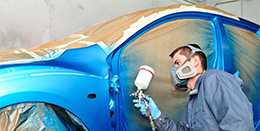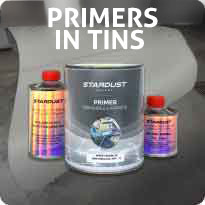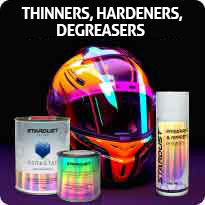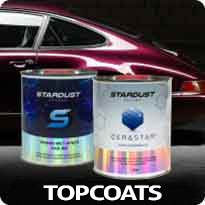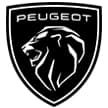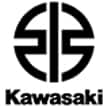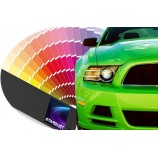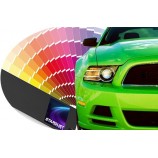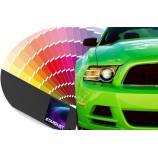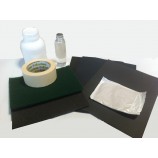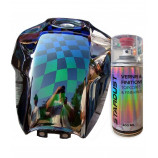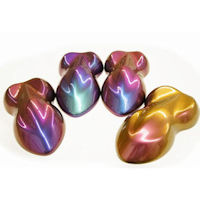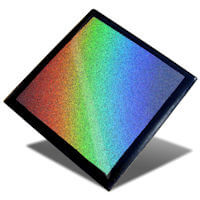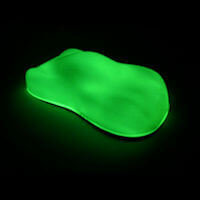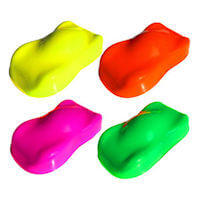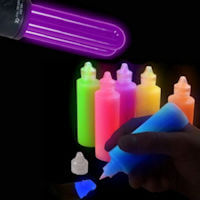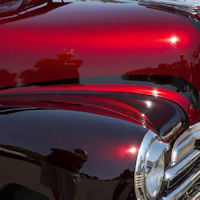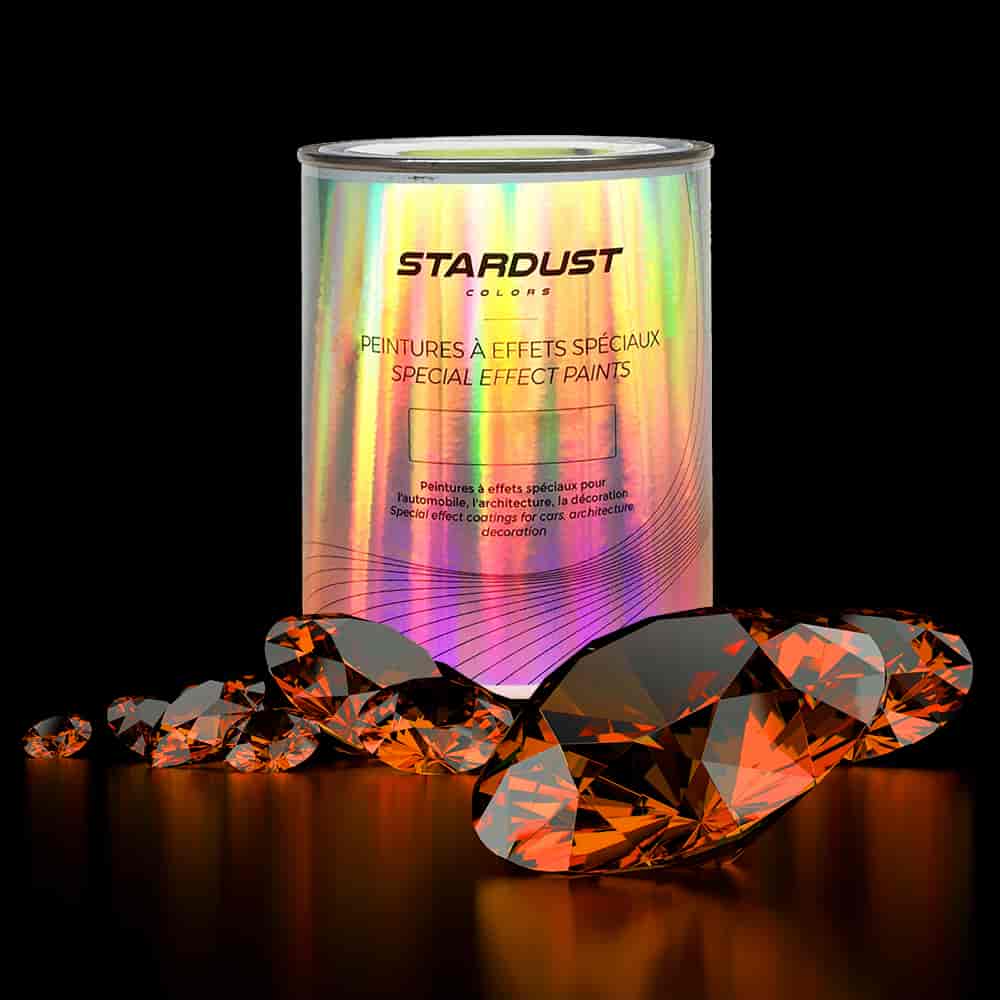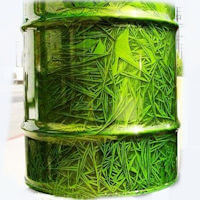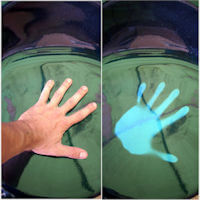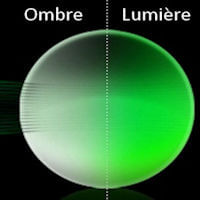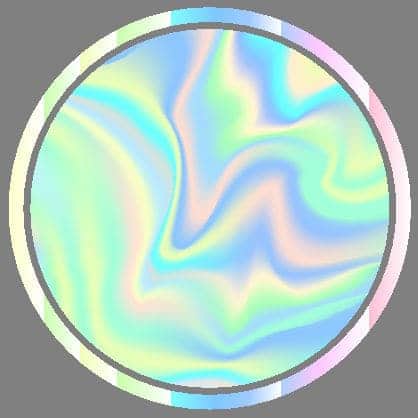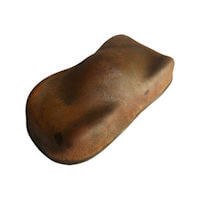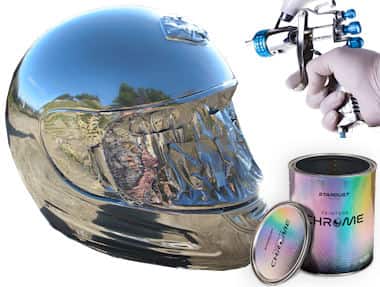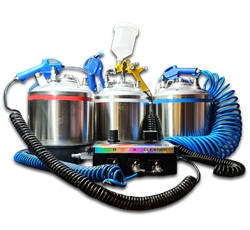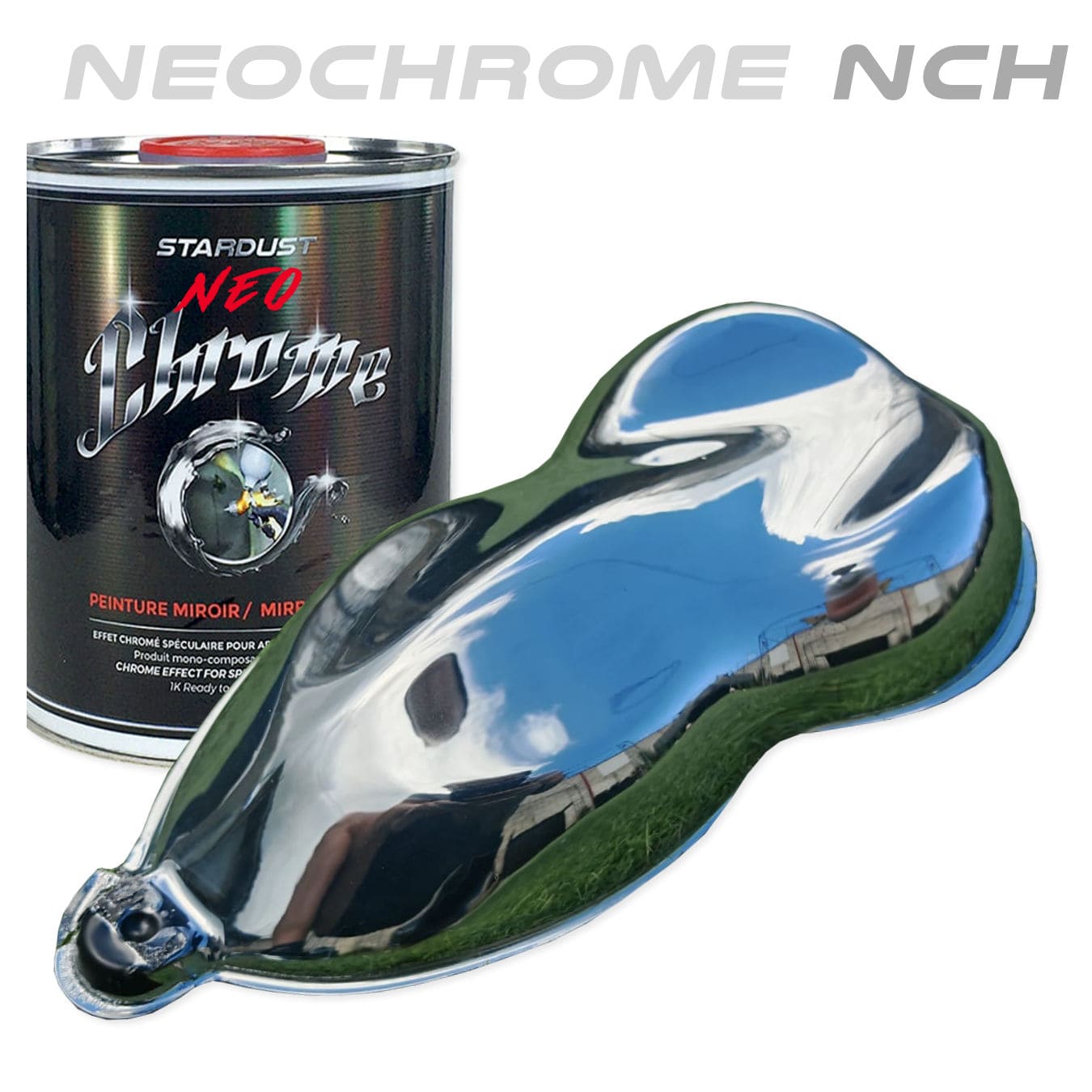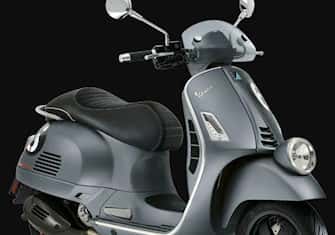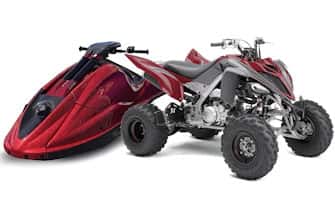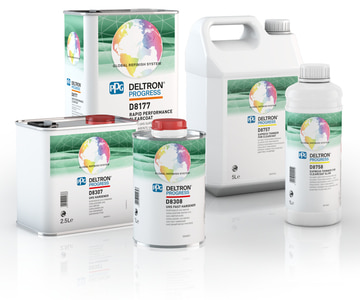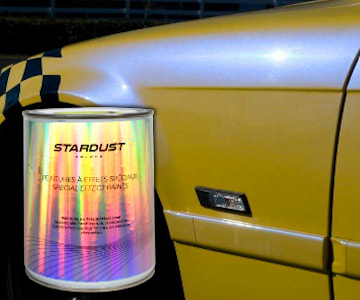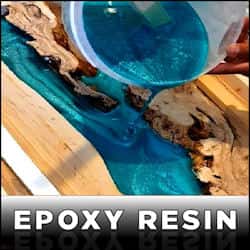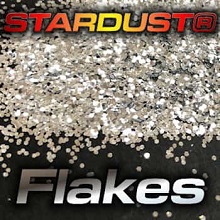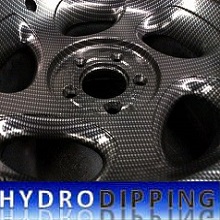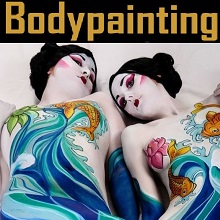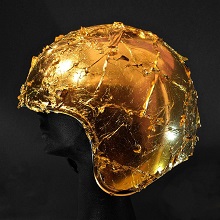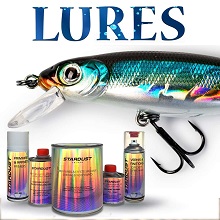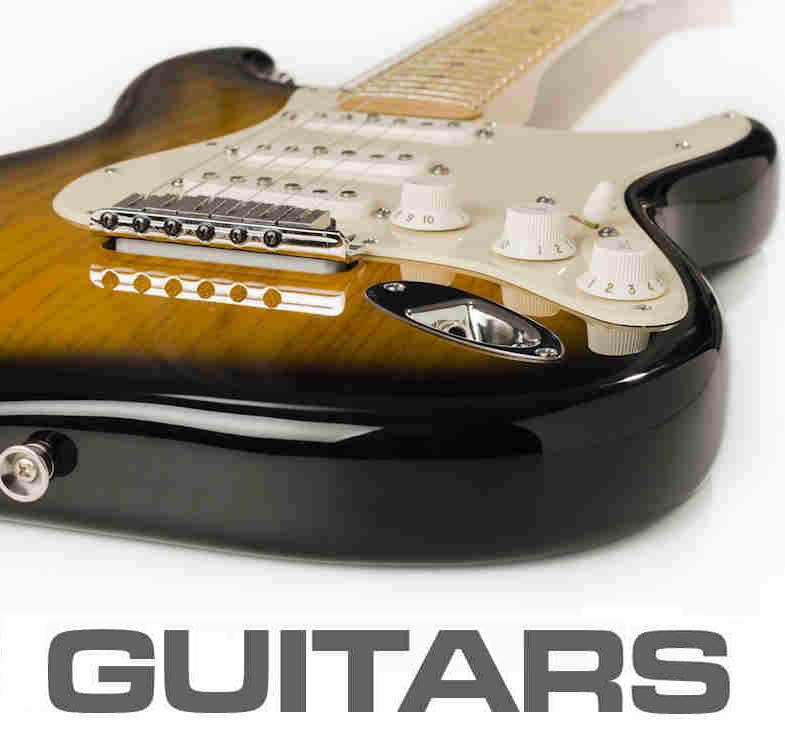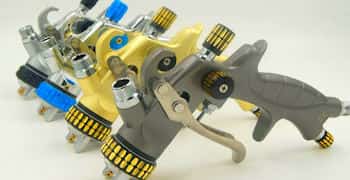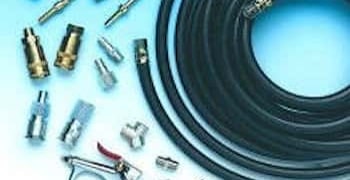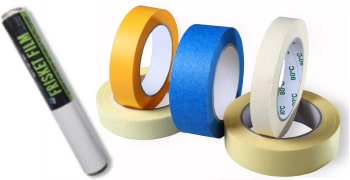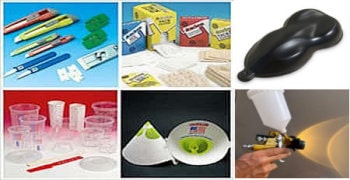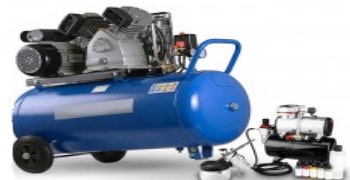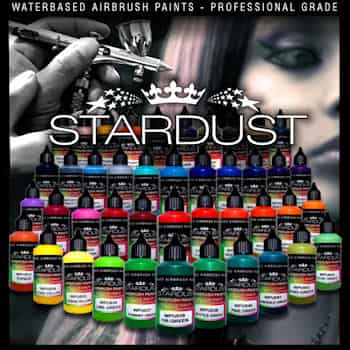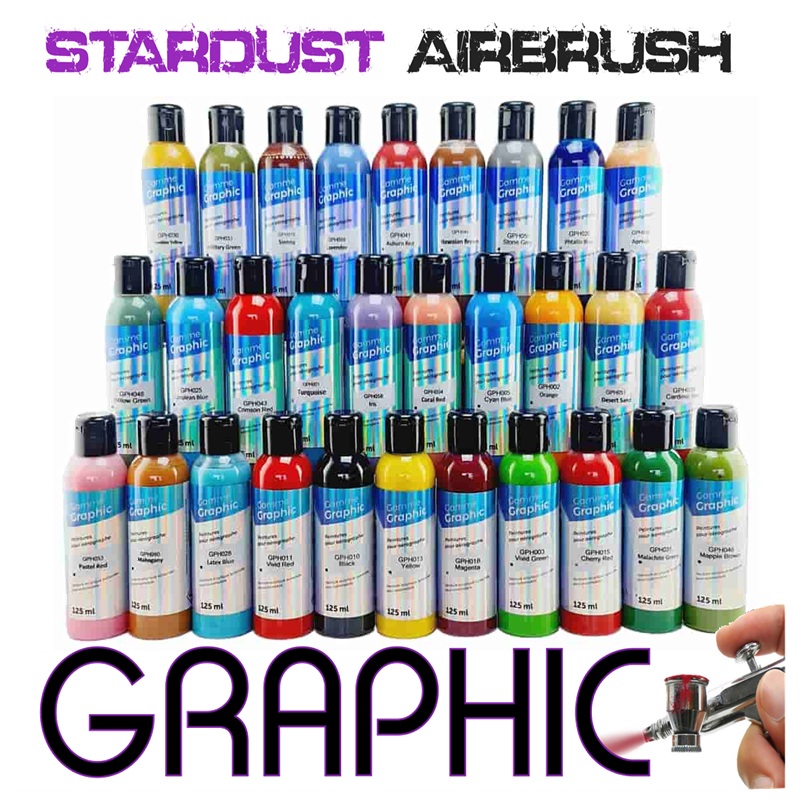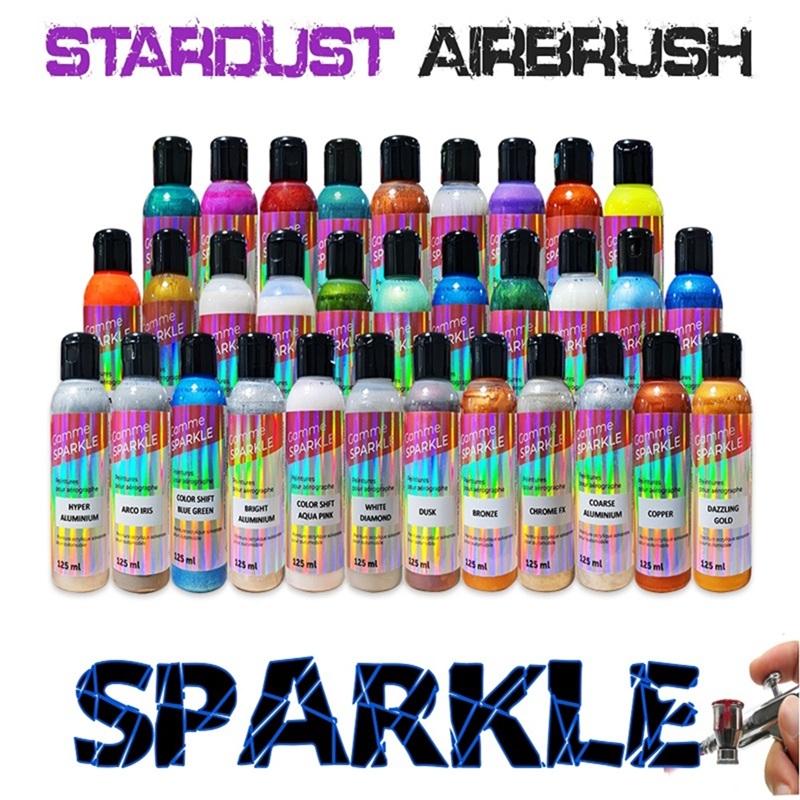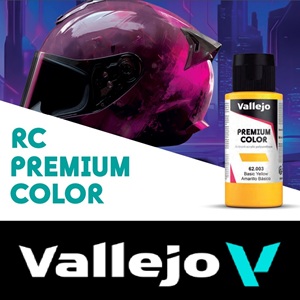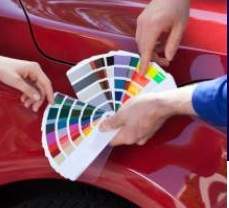To order a 1K basecoat or a 2K paint using DAIHATSU colour codes, the process is quick and simple: just go to the product pages below. After selecting the desired packaging, click "Add to cart" to proceed to delivery and payment options.
>>>The DAIHATSU colour code must be entered in the small box on the basket page, or can simply be sent to us by email immediately after placing your order.
DAIHATSU manufacturer paint is prepared immediately by our colour technician, and the parcel is dispatched the same day if the order is placed before 3 p.m.
How much paint is needed to respray a vehicle body ?
The first step is to roughly measure the surface area by multiplying the width by the height. For instance, a left front wing measuring 1 metre in length by 0.5 metre in height gives 0.5 m². To measure the size of a bonnet : 1.5 m x 2 m = 3m², for example. Always round up to the next higher amount.
Given that 1 litre of paint covers 10 m², and that two coats will be applied, we estimate that 1 litre effectively covers 5 m² with 2 coats.
Available packaging options on our product pages include: 250 ml, 500 ml, 1L kit, 2L kit. See the following sections for kit details and to learn where to locate the paint code on your bodywork.
DAIHATSU vehicle colour codes
The original paints of this brand are available in 2 versions :
• 1K paint (also called 1K basecoat) - mandatory for pearlescent and metallic paints.
• 2K paint - for all solid, opaque colours.
All paints are supplied in a solvent-based version. This enables faster drying, easier application, and increased durability (twice that of water-based paints).
Packaging is available for both spray-gun application (in can format) and aerosol paint (400ml spray cans) for those without spray guns who wish to paint without professional assistance.
All paints made using DAIHATSU colour codes are relatively easy to apply and come in standard shades – either opaque or, in the case of more modern finishes, pearlescent and metallic.
Depending on the DAIHATSU colour code, the application process may differ:
• For metallic DAIHATSU colours: apply 3 to 4 light coats in quick succession, with around 2 minutes between coats.
• For solid colours supplied as 2K paint: apply 2 thick, glossy coats with a 10-minute interval between coats.
Caution: When spraying large parts such as bonnets or front bumpers, ensure you shake the aerosol can regularly to maintain consistent flow and pressure. Aerosols are effective on small parts, but for larger surfaces, they may cause marbling (uneven finish).
History of the DAIHATSU manufacturer
DAIHATSU is a Japanese car manufacturer officially founded in March 1951. In reality, its origins go back to the early 20th century, since DAIHATSU emerged from the restructuring of an earlier company established in 1907.
In the 1930s, DAIHATSU mainly produced a type of motorised tricycle used for goods transport – essentially a motorcycle with a rear bin and two wheels. It later drew on American innovations from factories in Japan to develop and produce four-wheeled vehicles.
During the Second World War (the Pacific War), DAIHATSU's factories were fully requisitioned by the Japanese government to support the war effort against the Americans.
The company remained independent and successfully exported several models to Europe until Toyota acquired a majority stake in 1997 (not 1927), under government pressure to boost exports and consolidate the national car industry.
In 2013, DAIHATSU withdrew from the European market, citing export challenges, notably currency exchange issues.
In 2011, the brand invested heavily in Indonesia in a low-cost car manufacturing project aimed at producing energy-efficient “green” vehicles.
Its Indonesian plant covers nearly 70,000 m² and, as of 2011, produces 100,000 vehicles per year.
Where can you find the colour code on your DAIHATSU vehicle ?
For DAIHATSU models, the colour code plate (VIN plate) may be located in one of the following places :
- Inside the engine bay
- On the inside the passenger or driver doors (left side)
- Inside the boot
You may refer to the images below for guidance.
The colour code is always composed of three characters (letters and/or numbers).
Once you've selected your paint based on your colour code, remember: if your paint is a basecoat that requires varnishing, it is essential to apply a high-quality topcoat (bodywork clearcoat).
How to choose the best varnish ? You should always opt for UHS (Ultra High Solid) products, which contain more solid content. These varnishes remain thick and glossy after evaporation.

Iconic DAIHATSU colours
Our DAIHATSU colour database includes a wide range of references, some dating back tp 1970.
There are around a hundred shades, listed in the usual format: a short alphanumeric code followed by a colour name, which serves as a confirmation reference to avoid any confusion or error.
Examples of colour codes:
DAIHATSU 1C8 LUNAR MIST (2000 - 2006)
1D4 SILVER TITANIUM (2004 - 2006)
1E7 QUICK SILVER / CLASSIC SILVER (2012-)
Paint packaging and delivery formats :
1K basecoats (to be varnished) are supplied pre-diluted in 250 ml and 500 ml formats. The 1L and 2L kits consists of two cans: one with pure paint, the other with thinner.
For 2K paints: the paint is supplied undiluted and comes with a hardener and a thinner in separate cans.
Hyundai car colour code
Nissan car colour code
Toyota car colour code
Lexus car colour code
Mazda car colour code
Mitsubishi car colour code
Honda car colour code
Isuzu car colour code
Subaru car colour code
Ssangyong car colour code
Suzuki car colour code
Daewoo car colour code







